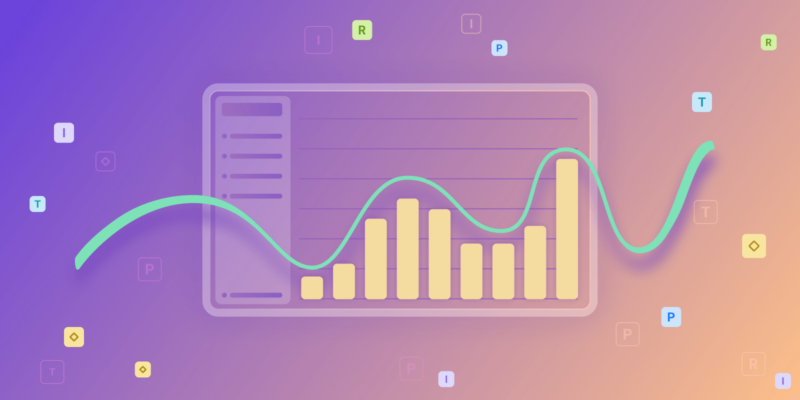Have you ever had a number of options available to you but couldn‘t decide which one worked best? I‘m not talking about trivial decisions like what‘s for lunch or what TV show to watch. I‘m talking about the significant, far-reaching choices you make as a project manager: which issue to tackle first, for example, or which project to prioritize.
What is a PICK chart?
The PICK chart is a Lean Six Sigma tool that Lockheed Martin first developed for lean production. Its original purpose was to organize ideas for process improvement and categorize them for easy review and analysis.
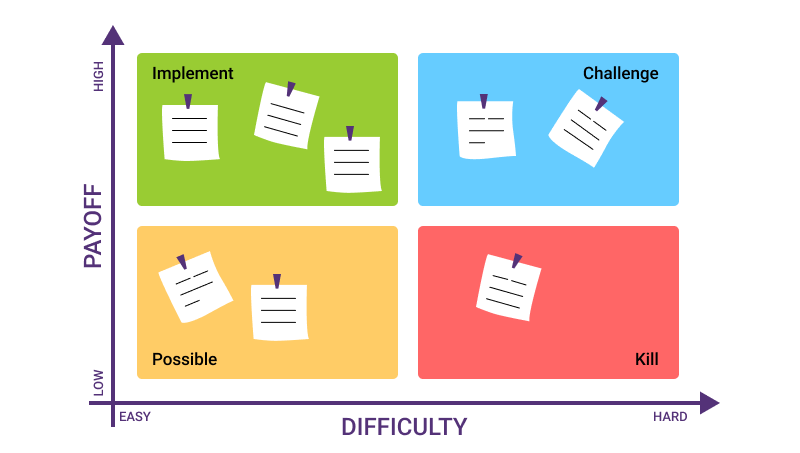
Your typical PICK chart is a 2Ö2 matrix, with the horizontal scale measuring the benefits and the vertical scale measuring the difficulty. You evaluate a project or idea and place it in the most appropriate of the four available squares. Each square of the PICK diagram will have a corresponding action:
- Possible – Low payoff, easy to do
- Implement – High payoff, easy to do
- Challenge – High payoff, hard to do
- Kill – Low payoff, hard to do
How do I use it?
PICK charts are great for brainstorming and project planning. It‘s easy to set up, easy to understand, and allows project managers to focus the discussion and achieve a consensus.
Once you‘ve sorted out your options, you now have a better idea of what should be done next in your PICK analysis.
- “Implement” ideas are generally the ones that should be acted upon.
- “Challenge” ideas may still be viable if there‘s an easier way to do them.
- “Possibles” should probably only be done if there‘s spare time.
- “Kill” ideas are normally dismissed outright, but there are some who say that “Kill” ideas should be reviewed and revised into something more accomplishable.
The beauty of the PICK chart is that it can be used anywhere, no matter what your team or business is. So the next time you‘re evaluating ideas, try out the PICK chart and see if it works for you. It‘s a heck of a lot better than picking ideas based on who shouts the loudest.
PICK chart example
To make it easier to understand the PICK model, let‘s take a look at a real-life PICK chart example for a project manager. The first step is to set the subject question: what do I need to do to improve my performance? Now let‘s get down to identifying our ideas.
In a perfect world, a manager would take two-three offline practical courses. But since none of us have that much time, this idea will go to the “Challenge” board of your PICK chart. Instead, a manager can take one professional course and preferably an online one. This way it will be possible to spend as much time on the course as the manager wants. This idea goes to the “Implement” board.
The “Possibles” can include interviews with dozens of industry professionals but can be done only if our manager has some free time. The idea of getting an extra degree when our manager already has experience might be a “Kill” one since theoretical knowledge, in this case, is unlikely to help with the performance. As a result, we have the following PICK chart example:
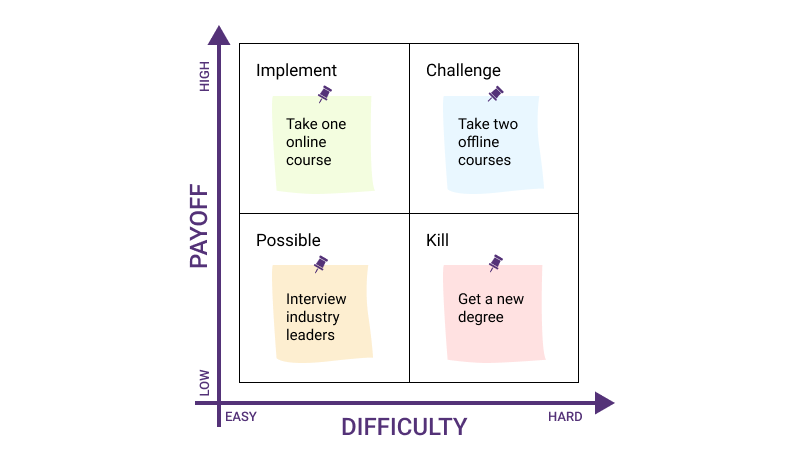
How to create a PICK chart with Project Management Software
Creating a PICK chart is straightforward, especially with project management software such as Birdview. Follow these steps:
1. List your tasks: Use the software‘s task management feature to list all tasks or projects. This centralizes everything for easy access and updates.
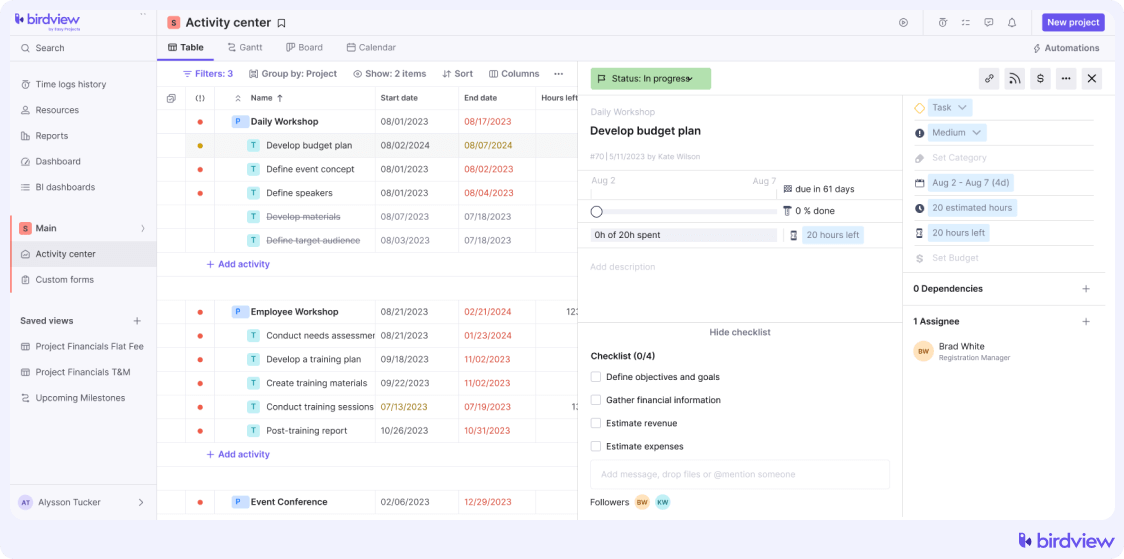
2. Assess the impact: Categorize tasks as high, medium, or low impact using labels within the task details.
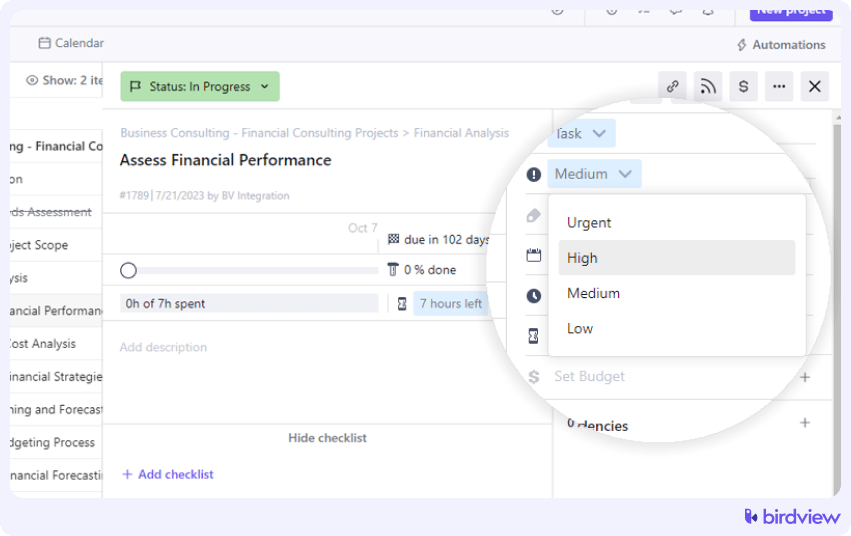
3. Assess the effort: Use the same fields to categorize tasks by effort. Time tracking and resource management features can help estimate effort accurately.
4. Plot your tasks: Create a visual PICK chart. To help you start off with your first brainstorming session, get our free PICK chart template now and generate new business ideas!
Download free PICK chart template here
5. Review and adjust: Use collaboration tools, such as message boards, to discuss and adjust task priorities with your team.
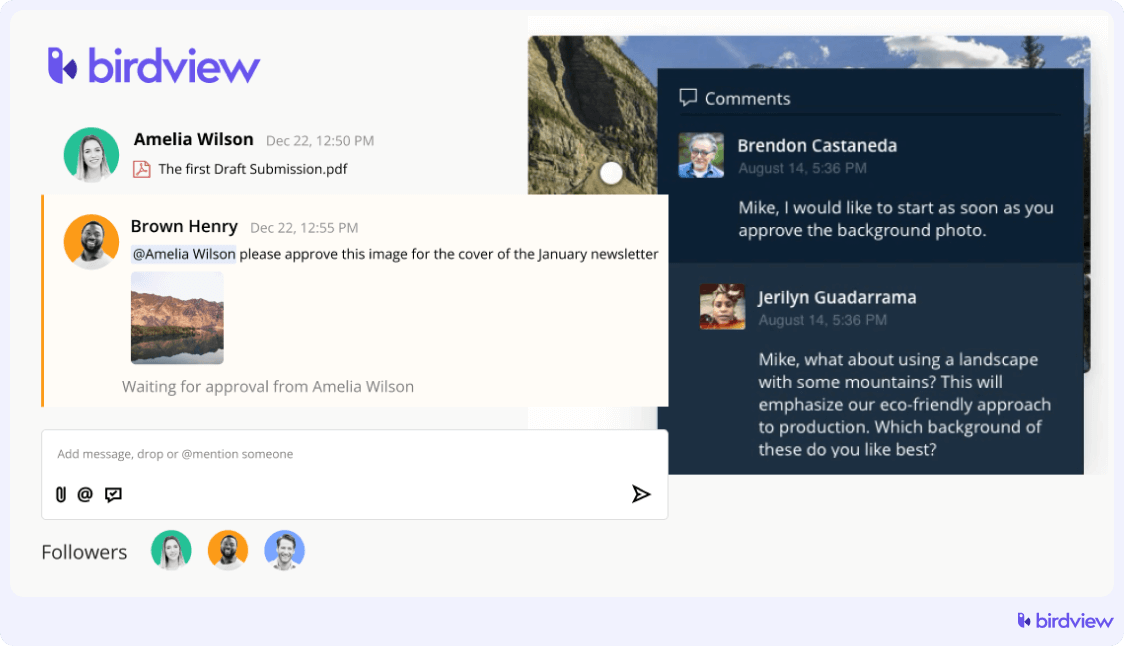
6. Take action: Monitor progress, set deadlines, and allocate resources using the resource scheduling feature.
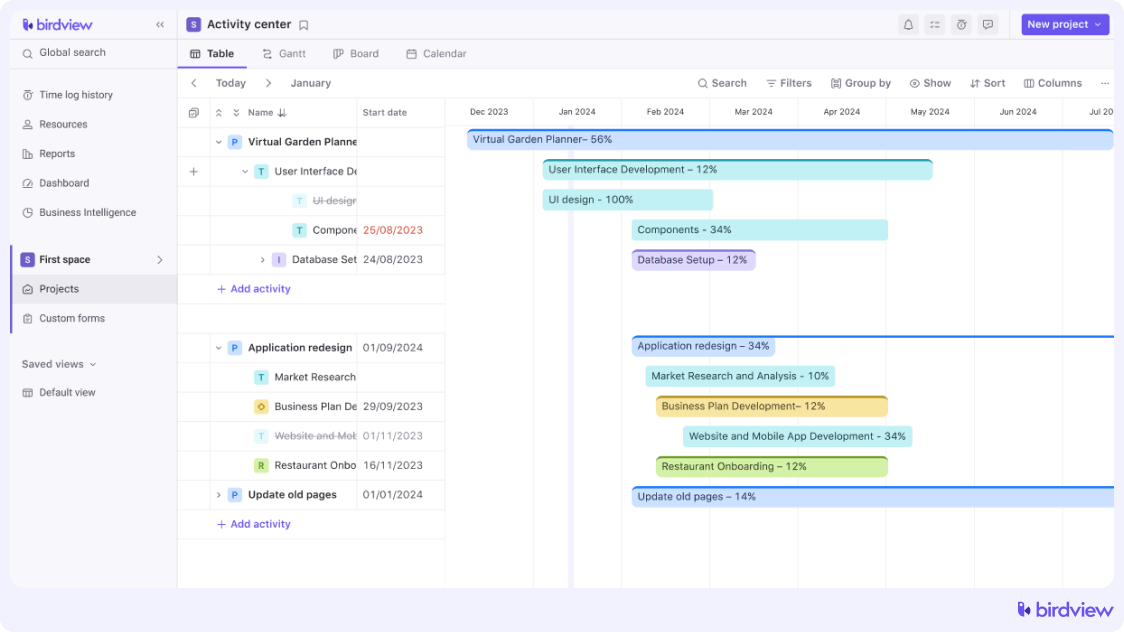
7. Regular updates: Regularly update your PICK chart using reporting and analytics features to keep priorities current.
The most popular project management tools with free trials
Discover the top project management tools to enhance your project management and performance.
Birdview
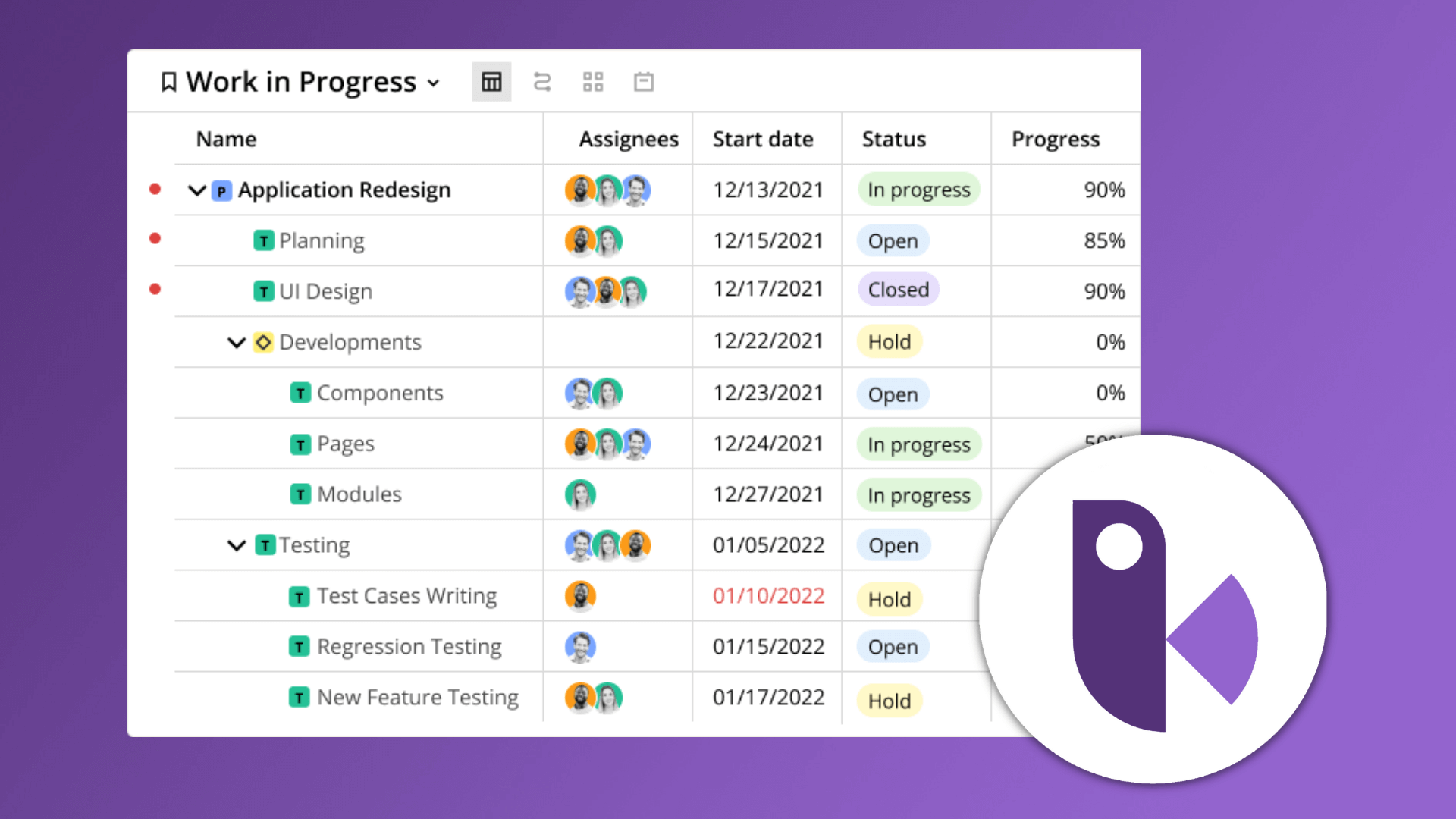
Birdview is a full-featured platform that helps internal teams and service delivery teams plan resources and projects, manage tasks and workflows, track costs, and analyze the financial implications of existing and upcoming work. Advanced resource management functionality allows creating realistic plans and obtaining the information needed to ensure your organization has enough resources to fulfill your current needs and take on more work with confidence.
Key Features: Resource Management (Resource Loading Center), Online Project Management and Project Management Collaboration Tools, Time Tracking and Financial Management, BI Dashboard & Project Management Reports, Forecasting, Free Client Portal.
Trial: 14-day free trial + extended 14-day trial
How to get started: click the trial access link
Asana
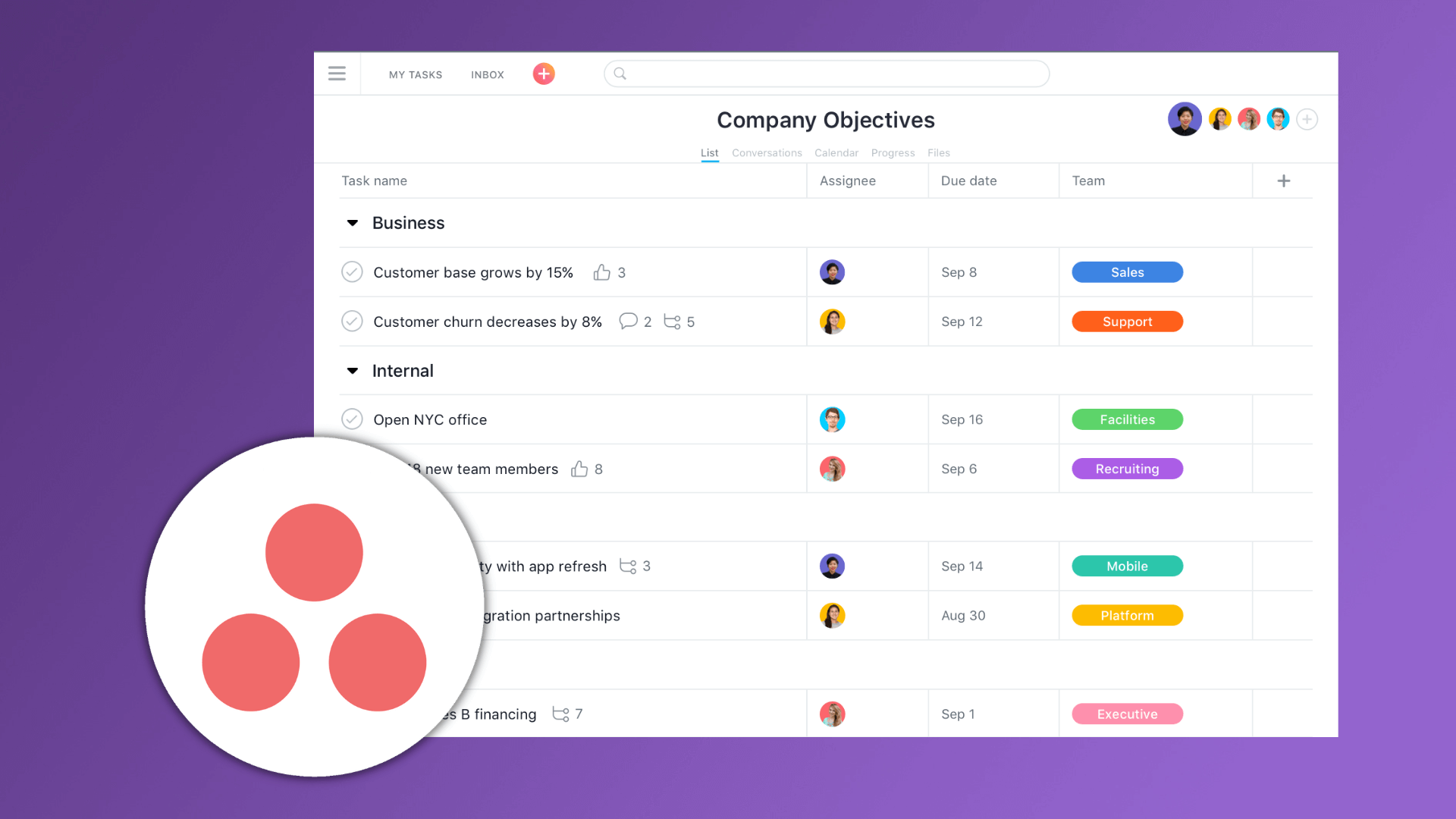
Asana is a task and project management software to help teams keep better track of their project progress across multiple clients. Asana also helps reduce the number of errors, simplify workflows, and cut down time spent on repetitive tasks thanks to an in-built automation feature.
Key Features: Workflow Builder, Reporting, Automation, Forms, Boards.
Trello
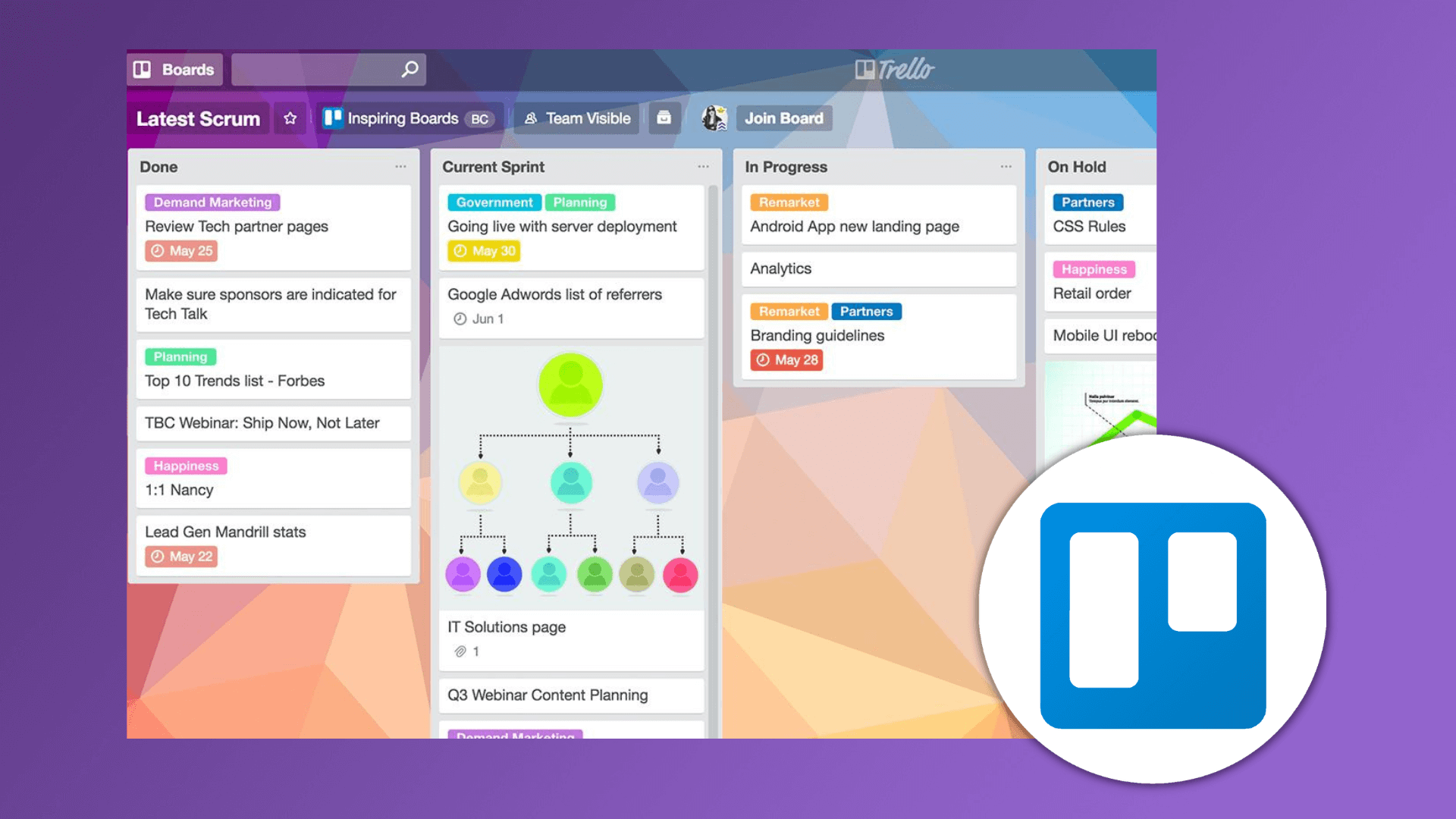
Trello is a collaboration and task management tool that helps teams increase their productivity and better work together on multiple projects. Trello provides team members with features needed to establish strong inside communication and collaboration, as well as to streamline key processes and focus on more important tasks.
Key Features: Automation, Views, Templates, Integrations
nTask
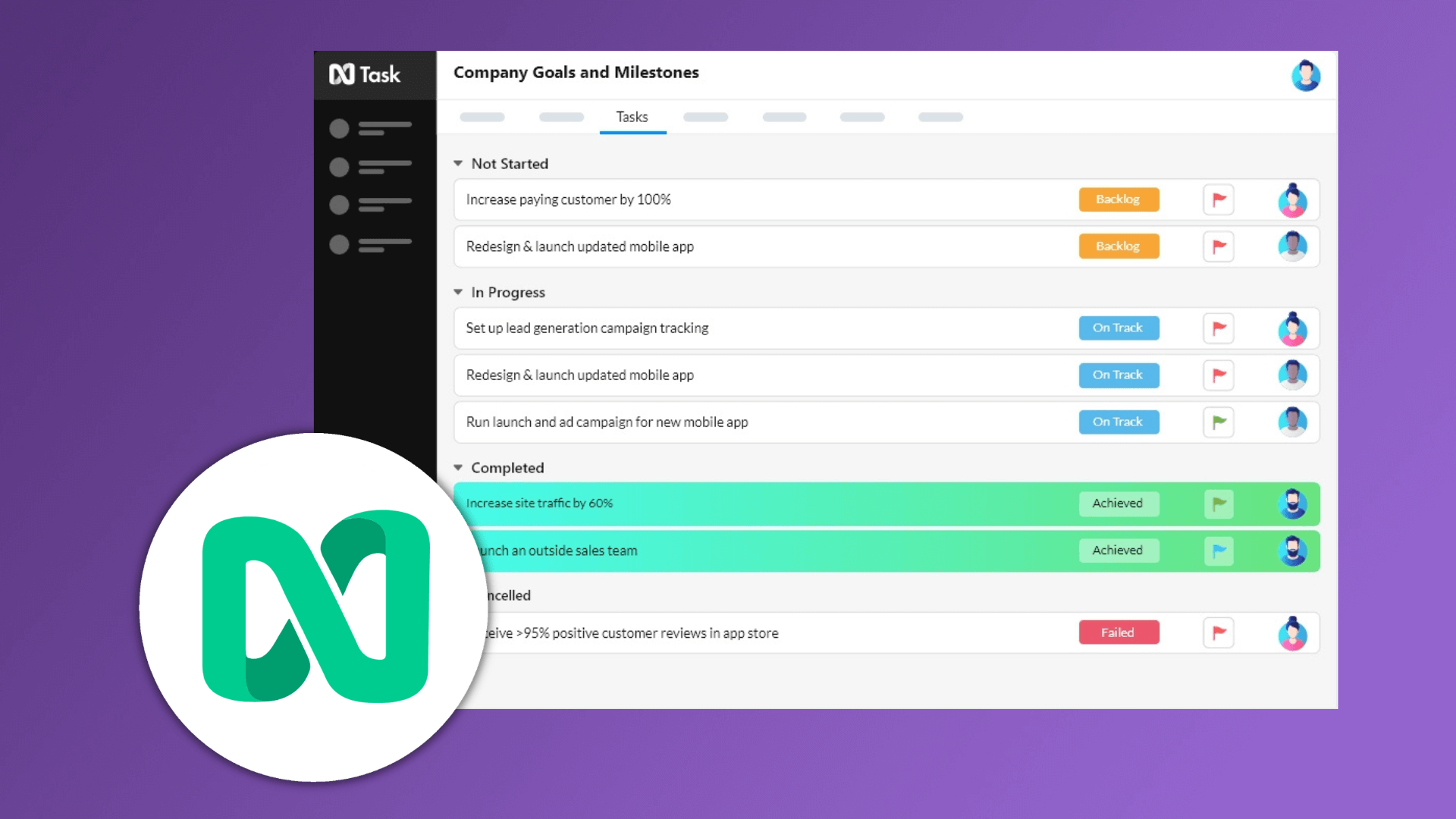
NTask is a cloud-based task management solution that allows managing, planning, and analyzing growing teams’ projects. The tool will be a useful addition to small teams and individuals to help them achieve better results in the growing environment. NTask promotes stronger team collaboration.
Key Features: Project Management, Task Management, Time Tracking, Team Management, Issue Tracking


